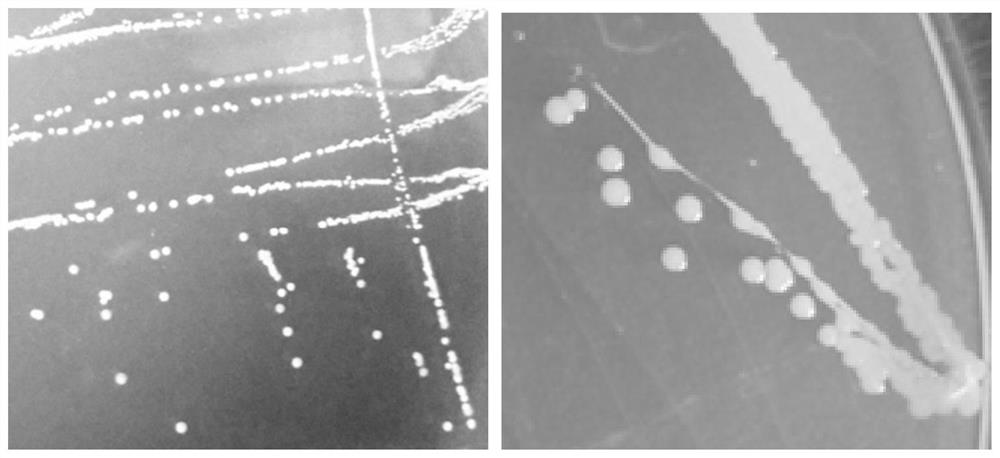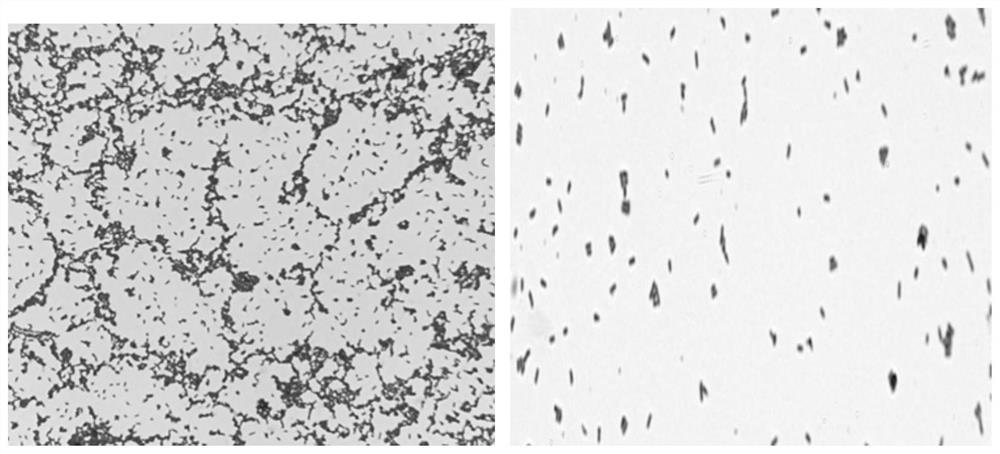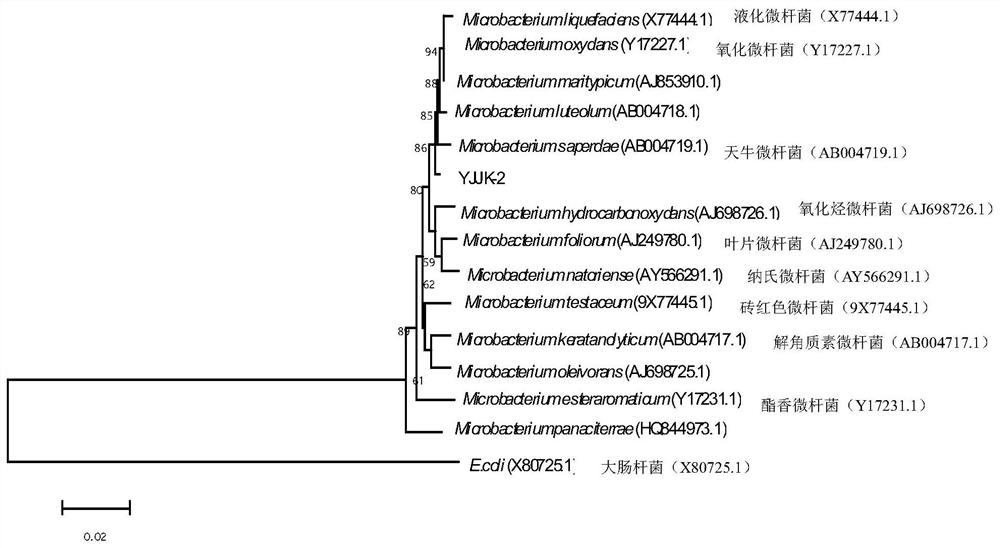A salt-alkali-resistant and disease-resistant growth-promoting bacterium Microbacterium longus and its application
A technology of microbacteria and salt-alkali resistance, which is applied in the field of agricultural biology to achieve the effects of promoting plant growth, improving raw material utilization, and increasing the concentration of viable bacteria
- Summary
- Abstract
- Description
- Claims
- Application Information
AI Technical Summary
Problems solved by technology
Method used
Image
Examples
Embodiment 1
[0028] Embodiment 1: Screening of Microbacterium longiferi YJJK-2 bacterial strain
[0029] (1) Microbacterium longiferi YJJK-2 was isolated from cucumber rhizosphere soil. The soil was sampled in Kenli District, Dongying City, Shandong Province, which is saline-alkali soil. The specific separation method is as follows: mix the soil sample evenly, weigh 5g, put it into a conical flask filled with 95mL sterile water and 10 glass beads, shake it at 37°C and 180rpm for 30min. Take 1 mL of soil suspension for 10 -1 -10 -7 Serial concentration gradient dilution, and then take 10 -5 、10 -6 、10 -7 The three dilutions were spread on the plate containing the selection medium, and cultured upside down at 37°C for 2 days. Single colonies were picked and streaked onto plates containing selection medium, and cultured upside down at 37°C for 2 days. Pick a single colony and transfer it to the slant of the preservation medium test tube, culture it at 37°C for 2 days, and store it in a...
Embodiment 2
[0038] The identification of embodiment 2 microbacteria bovis YJJK-2
[0039] (1) Morphological and physiological and biochemical characteristics
[0040] The morphological characteristics of the YJJK-2 strain are: cultivated on NA medium at 37°C for 48 hours, the colony diameter is about 0.5-0.8mm, yellow translucent, round, smooth, raised, moist, viscous, shiny, The texture is uniform and the edges are neat; the bacteria are short rod-shaped, such as figure 1 and figure 2 shown. The NA medium is nutrient agar medium, and its formula is 3 g of beef extract, 10 g of peptone, 5 g of NaCl, 20 g of agar, 1000 mL of water, and pH 7.0.
[0041] The physiological and biochemical characteristics of the YJJK-2 bacterial strain are: Gram-positive rod-shaped bacteria that cannot grow under anaerobic conditions; positive enzyme test, positive catalase test, positive urease test; negative starch hydrolysis test, V-P Test negative, gelatin liquefaction test negative, nitrate reduction...
Embodiment 3
[0045] Example 3 Ability of Microbacterium bovis YJJK-2 strain to dissolve phosphorus and produce IAA
[0046] Prepare inorganic phosphorus bacterial culture medium, its formula is: glucose 10.0g, (NH 4 ) 2 SO 4 0.5g, MgSO 4 ·7H 2 O0.3g, MnSO 4 4H 2 O 0.03g, KCl 0.3g, FeSO 4 ·7H 2 O 0.03g, NaCl 0.3g, Ca 3 (PO 4 ) 2 10.0g, 20g agar, 1000mL distilled water, pH=7.5, sterilize at 121°C for 20min.
[0047] Phosphorus-dissolving ability of Microbacterium longiferi YJJK-2: Microbacterium longiferi YJJK-2 strain was inoculated on an inorganic phosphorus medium plate with a sterilized toothpick, cultured at 28°C for 2-5 days, and the transparent circle and colony diameter were measured. Calculate the ratio of transparent circle to colony diameter (HC). The diameter of the phosphorus-dissolving transparent circle produced by YJJK-2 on the inorganic phosphorus medium is 0.79mm, the diameter of the colony is 0.26mm, and the HC value is 3.04, indicating that the bacterial str...
PUM
| Property | Measurement | Unit |
|---|---|---|
| diameter | aaaaa | aaaaa |
| diameter | aaaaa | aaaaa |
Abstract
Description
Claims
Application Information
 Login to View More
Login to View More - R&D
- Intellectual Property
- Life Sciences
- Materials
- Tech Scout
- Unparalleled Data Quality
- Higher Quality Content
- 60% Fewer Hallucinations
Browse by: Latest US Patents, China's latest patents, Technical Efficacy Thesaurus, Application Domain, Technology Topic, Popular Technical Reports.
© 2025 PatSnap. All rights reserved.Legal|Privacy policy|Modern Slavery Act Transparency Statement|Sitemap|About US| Contact US: help@patsnap.com



